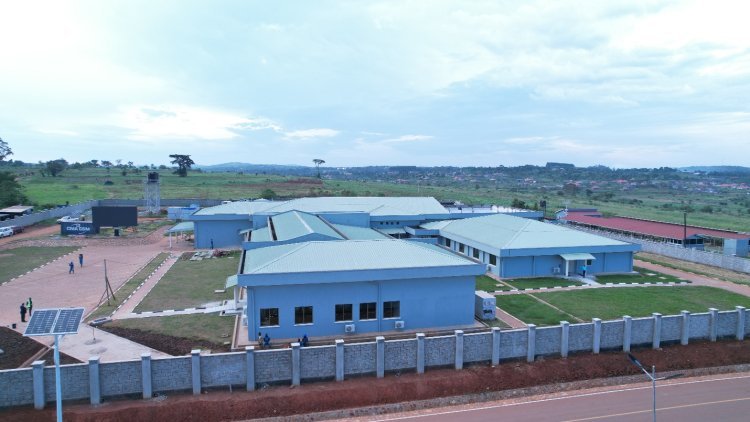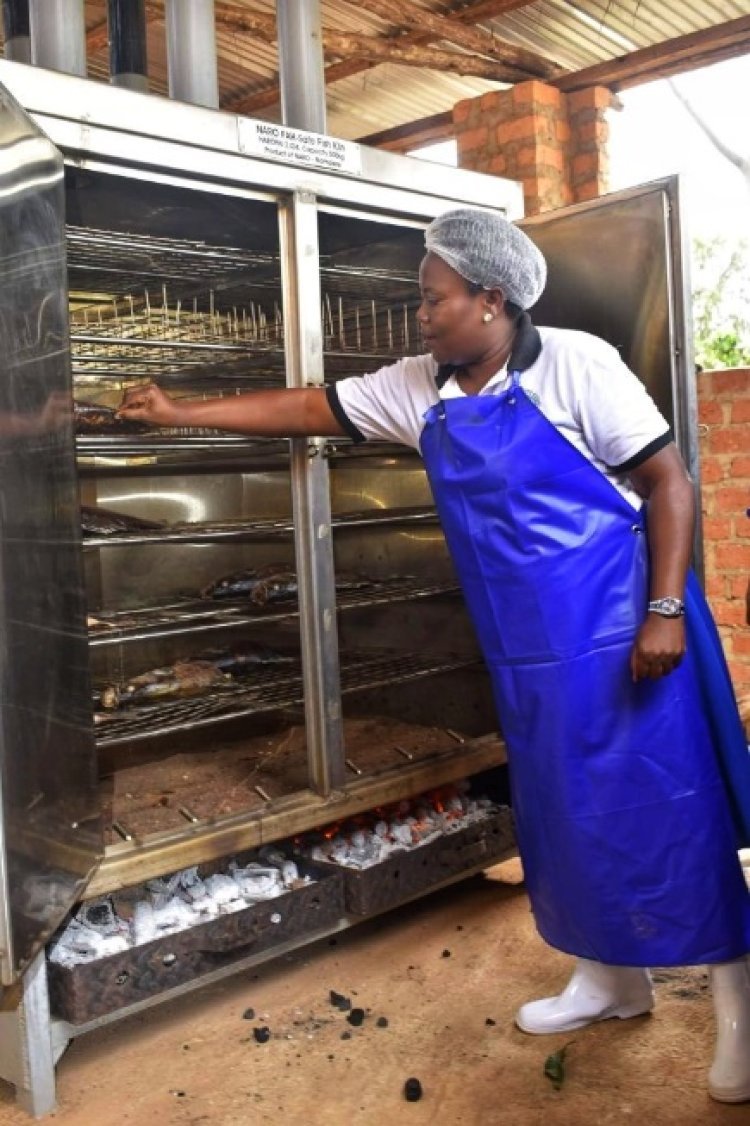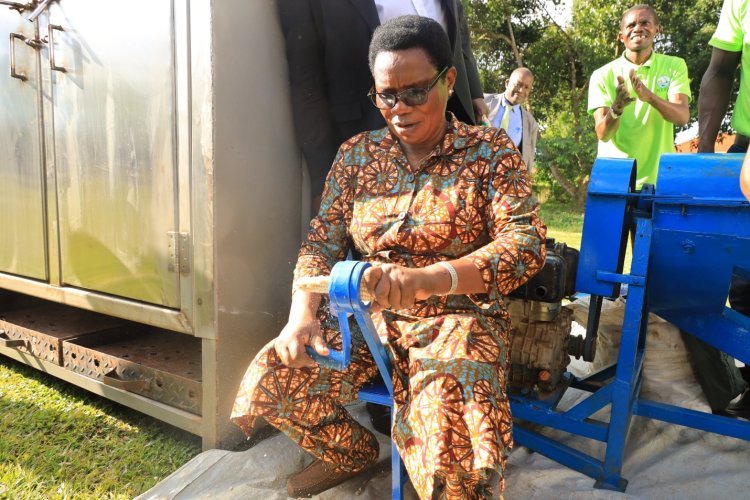OP-ED: Agricultural Research as a Trigger for Economic Transformation

By Frank Mugabi
In the 2024/2025 budget speech, Minister of Finance, Planning, and Economic Development, Hon. Matia Kasaija, severally underscored the critical role of agriculture in driving Uganda’s economic transformation.
The Agricultural Sector continues to be the mainstay of Uganda’s economic growth; employing approximately 70% of the population, and contributed 23.8% of the national GDP in the Financial Year 2022/2023.
The budget theme, "Full Monetisation of Uganda’s Economy through Commercial Agriculture, Industrialisation, Expanding and Broadening Services, Digital Transformation and Market Access," emphasizes the need to prioritise investment in the agriculture sector for the country to achieve her ambitious development goals.

The NARO anti-tick vaccine research and production facility at Nakyesasa in Wakiso district
Achieving progressive agriculture is impossible without significant investment in research and development. Changing environmental conditions present new challenges for agriculture, such as floods, droughts, pests, and diseases, leading to substantial agricultural losses.
A robust system equipped to respond to these challenges justifies the need for substantial investment in agricultural research and development.
The National Agricultural Research Organisation (NARO) holds the national mandate for spearheading initiatives that enhance agricultural productivity and ensure food security. Over the past 30 years, NARO has developed over 1,000 technologies, innovations, and management practices.
Notably, progress in establishing a local anti-tick vaccine production facility at Namulonge is a pivotal step towards addressing tick-borne diseases, which cause annual losses of up to USD 1.1 billion.

The new fish smoking kiln developed by NARO. Photo Credit: NARO/NARL
Adequate funding can accelerate vaccine production, ensuring timely and widespread distribution, saving substantial costs, and supporting the regional meat and milk market, estimated at Shs 3 trillion. With enhanced financial support, NARO can develop and roll out more effective and varied solutions for the wider livestock sector.
Similarly, the development of an afla-safe facility at Namulonge to combat aflatoxins in cereals and nuts is progressing, though funding gaps remain.
Aflatoxins pose significant threats to food safety and agricultural exports, affecting farmers' incomes and public health. Increased funding would enable NARO to expand this initiative, ensuring broader coverage and more robust solutions to safeguard both domestic and international food supplies.
The facility will have capacity to produce 5tons of aflasafe per hour. Once this facility is functional, Uganda will save an estimated US$38 million lost annually in export opportunities due to aflatoxin. This will also greatly impact on the economy in terms of prevention of diseases in human beings (mainly cancer) and increasing the production of quality milk and eggs.

The chairperson Parliamentary Committee on Agriculture, Hon. Janet Okori-Moe tries out NARO’s portable manual Maize Sheller. Photo Credit: NARO/Dickson Muyomba
The budget allocates Shs 1.878 trillion towards deepening agro-industrialisation with a focus on commercialisation and value addition. While this is a significant investment, the scale of agricultural challenges necessitates even greater funding for R&D.
NARO’s research into genetic development of value chains for livestock, fish, crops, forestry, and crosscutting areas is essential for enhancing product quality and yield.
Additional funding would enable more comprehensive research and faster implementation of findings, making Ugandan agricultural products more competitive in regional and international markets.
In a major boost to fish exports, NARO developed a Fish Smoking Kiln that processes high quality smoked fish by reducing the cancer-causing compounds in our smoked fish from 40,000 ppb to 0.88 ppb, well below the maximum limit of 2 ppb set by international markets such as EU and USA markets.

The new fish smoking kiln developed by NARO. Photo Credit: NARO/NARL
Agricultural mechanization is another cornerstone of productivity enhancement. The budget listed the procurement and distribution of 240 tractors and additional single-axle tractors, which are steps in the right direction.
It is also important to innovate and adapt mechanisation solutions that meet the unique needs of Ugandan farmers. For example, NARO has developed eleven (11) agro-machinery prototypes including;
a hydraulic ram pump, rice thresher, maize shellers, forage chopper, and Food Grade Cassava Chipper, among others, as more efficient and affordable mechanisation technologies compared to the rudimentary methods that the majority of farmers currently use. Private sector players are invited to sign up the prototypes for mass production.
Ensuring access to high-quality seeds is fundamental for achieving high yields and food security.
Given the economic importance many Ugandan communities attach to maize, NARO released two new maize varieties: MAIZE 63 Vita, with a high grain yield of 7.0 to 7.8 tons per hectare, and MAIZE 64STR, resistant to Striga and yielding 6.5 to 7.5 tons per hectare in Striga-infested areas.
This has resulted in a 35% increase in maize production, from 3.5 million metric tons in FY2020/21 to 4.7 million metric tons in FY2022/23, and a 91% increase in maize export value, from USD 95.18 million (165,491 metric tons) in FY2020/21 to USD 188.2 million (190,573 metric tons) in FY2022/23.
NARO also released two new rice varieties (Rice WDR 73 and Rice KF 20039) yielding 8-10 tons per hectare compared to the traditional varieties' 5 tons per hectare.
These new varieties are aromatic and highly preferred by consumers. Additionally, two new sweet potato varieties (NAROSPOT 6 and NAROSPOT 7) versatile for both food and the confectionery industry have been released. These potatoes, suitable for bread and cake making, have the potential to cut wheat usage by up to 60%.
NARO's extensive research into resilient, high-yielding seed varieties adapted to local conditions has also empowered community groups to become seed multiplication entities, significantly involving women and girls.
The revenue generated has greatly improved the livelihoods of group members at the household level.
Research has also expanded value-added products from coffee and cocoa, developing by-products like body lotions, facial and body scrubs, yogurt, and creams.
The coffee facial and body scrub has been taken on by Movit Products Limited for mass production.
Before COVID, several water bodies were infested with invasive weeds like Kariba weed and Water Hyacinth, hindering fishing, water transport, and recreation, and threatening electricity generation.
NARO scientists deployed biological control agents to sustainably manage these infestations, reducing weed levels from over 90% to less than 10% on lakes Kyoga, Kwania, and Nakuwa. Ongoing efforts are addressing infestations on Lake Victoria.
This scale of innovation has potential to enhance productivity, ensure food security, and improve the competitiveness of Ugandan agricultural products, not to mention the accompanying creation of job opportunities.
By amplifying financial support for agricultural research, the government can catalyse the economic transformation envisaged in its ambitious budget goals.
The writer is the Head Communications at the National Agricultural Research Organisation (NARO)

 POATV Reporter
POATV Reporter 































